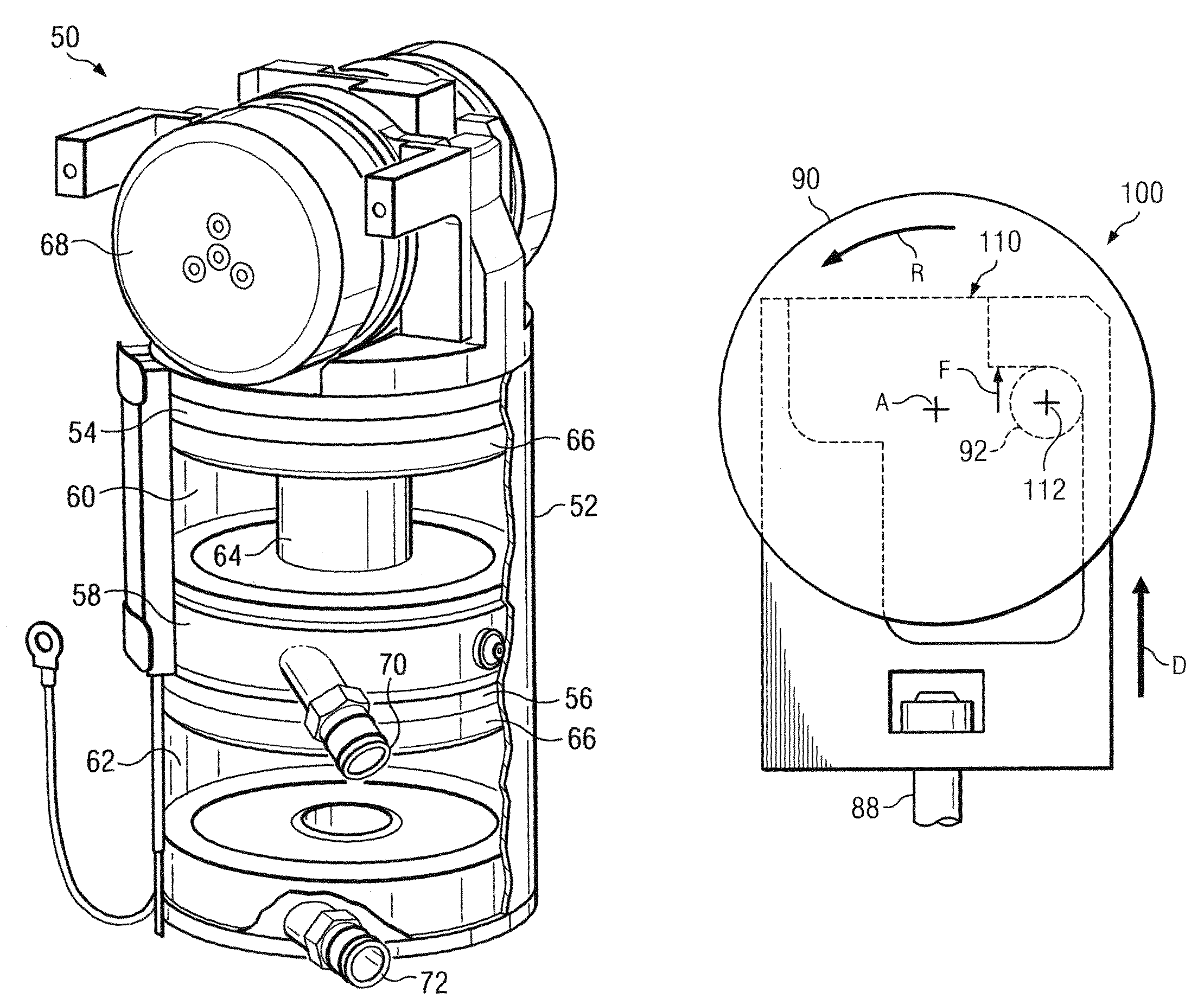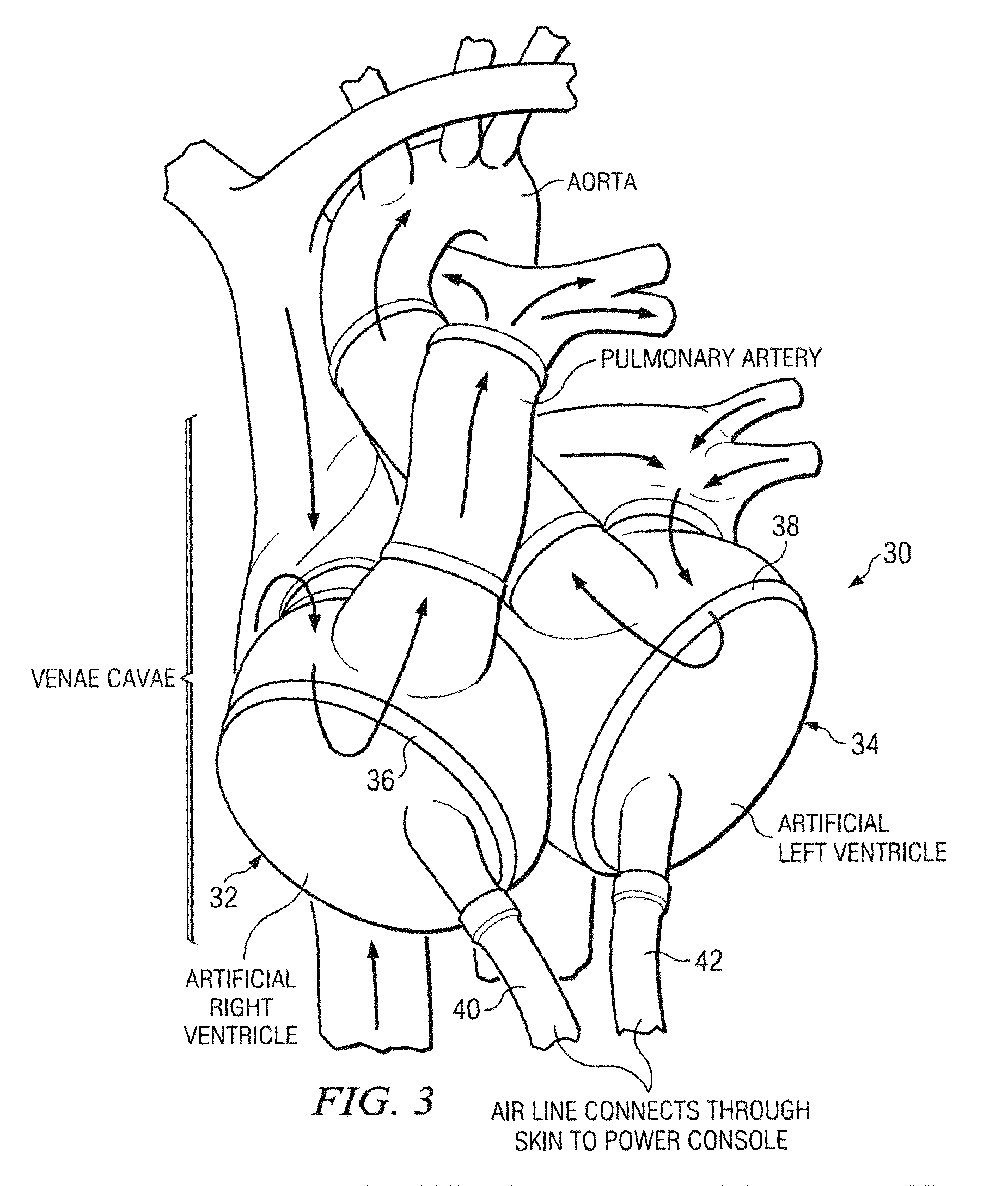Scotch-yoke mechanism for redundant actuation applications
a technology of scotch-yoke mechanism and redundant actuation, which is applied in the direction of piston pump, prosthesis, fluid coupling, etc., can solve the problems of large and heavy apparatus that cannot be transported on wheels, inconvenient operation, and inability to provide patients any degree of independent mobility,
- Summary
- Abstract
- Description
- Claims
- Application Information
AI Technical Summary
Benefits of technology
Problems solved by technology
Method used
Image
Examples
Embodiment Construction
[0040]FIG. 6 is a schematic illustration of a conventional scotch yoke, a device considered to be the most compact rotary-to-linear conversion mechanism (and vice versa). The typical scotch yoke 82 comprises a yoke 84 with a slot defining a cam 86 connected through some rigid means, such as a connecting rod or other element 88, to a target device requiring reciprocating linear translation (not shown). The scotch yoke is constrained so as to cause the rod 88 to follow the linear path meeting the target requirement. A rotary actuator 90 interfaces with the yoke via a cam follower 92. As the rotary actuator rotates, the cam follower pushes the yoke in one direction and then the other in a reciprocating, periodic manner. The motion of the reciprocating element 88 is a pure sine wave over time for a constant rotational speed of the actuator 90.
[0041]In some critical applications, such as for a pump driving an artificial heart, it is necessary to provide a backup for the drive system. If ...
PUM
 Login to View More
Login to View More Abstract
Description
Claims
Application Information
 Login to View More
Login to View More - R&D
- Intellectual Property
- Life Sciences
- Materials
- Tech Scout
- Unparalleled Data Quality
- Higher Quality Content
- 60% Fewer Hallucinations
Browse by: Latest US Patents, China's latest patents, Technical Efficacy Thesaurus, Application Domain, Technology Topic, Popular Technical Reports.
© 2025 PatSnap. All rights reserved.Legal|Privacy policy|Modern Slavery Act Transparency Statement|Sitemap|About US| Contact US: help@patsnap.com



